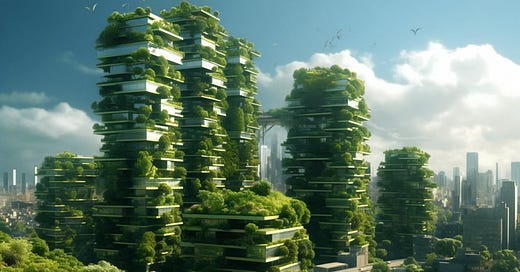Heat is a killer in many urban areas, with more than 3 million heat-related deaths globally between 2000 and 2019.
Increasing vegetation in urban areas by 30% would have prevented 1.16 million of those heat-related deaths, according to a new study in The Lancet.
Urban greenery can cool urban areas by an average of 3 degrees C during summers—a vital difference during a heatwave, the study found.
For example, botanical gardens, wetlands, rain gardens, green walls, tree-lined streets cool city air by 4 to 5 degrees C, according to a global study of green spaces.
Parks, playgrounds, and urban farming bring about 3 degrees of cooling.
Here’s how trees, shrubs, and grasses cool urban areas.
By providing shade, some of the sun’s heat is reflected, decreasing heat retention.
Plants absorb heat from the air and use that heat convert water into water vapor. This lowers the local air temperature and increases air movement.
Need-to-Know: Cities are far hotter than rural areas
Urban areas are almost always hotter than surrounding areas because roads and buildings absorb and radiate heat from the sun. Road traffic*, air conditioning, industrial and energy production, among other everyday activities, generate heat. This is known as the urban heat island effect.
*Note: 70 to 75% of the fuel burned in cars and trucks is converted into heat, which adds lots of heat to already hot cities.
Need-to-Know: Road traffic is the second-largest source of urban heat after buildings.
Even a 10% or 20% increase in vegetation could have prevented 27% or 32% of heat-related deaths, respectively.
Now is the time to start preparing cities for a much hotter world, while doing everything we can to slash emissions.
—Rogier van den Berg, of the WRI Ross Center for Sustainable Cities
Greener cities bring a host of co-benefits:
Trees can lower air pollution as they can absorb harmful gases and provide oxygen.
Reduce noise levels.
Provide critical habitat for pollinators and many bird species, both of which are in sharp decline.
Enhance outdoor physical activity, social engagement, and psychological wellbeing.
Lower rates of chronic disease.
By cooling cities, green spaces reduce cities’ energy consumption for air conditioning. They can also improve flood control. For example, China’s “sponge cities” have increased green space, created rain gardens, permeable surfaces, and other green infrastructure, and have reduced flooding as well as urban temperatures. (For more on this see Extreme Water Requires Collaboration Not Control.)
What can we do?
Plant trees, rewild your yard, and grow vegetables.
Protect the public trees and greenspaces we currently have.
Lobby our representatives for more greenspace.
Until next time, be well.
Stephen





